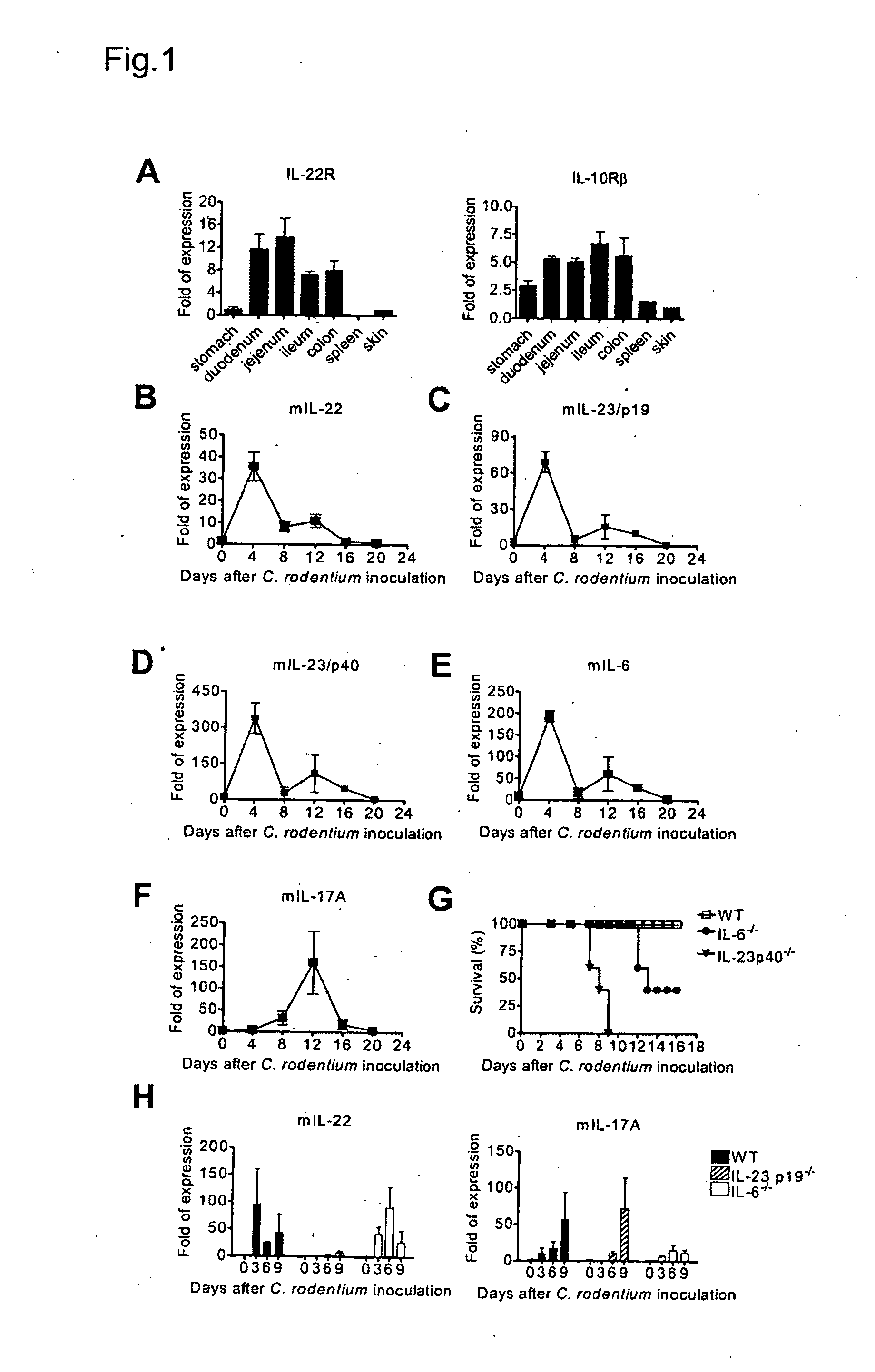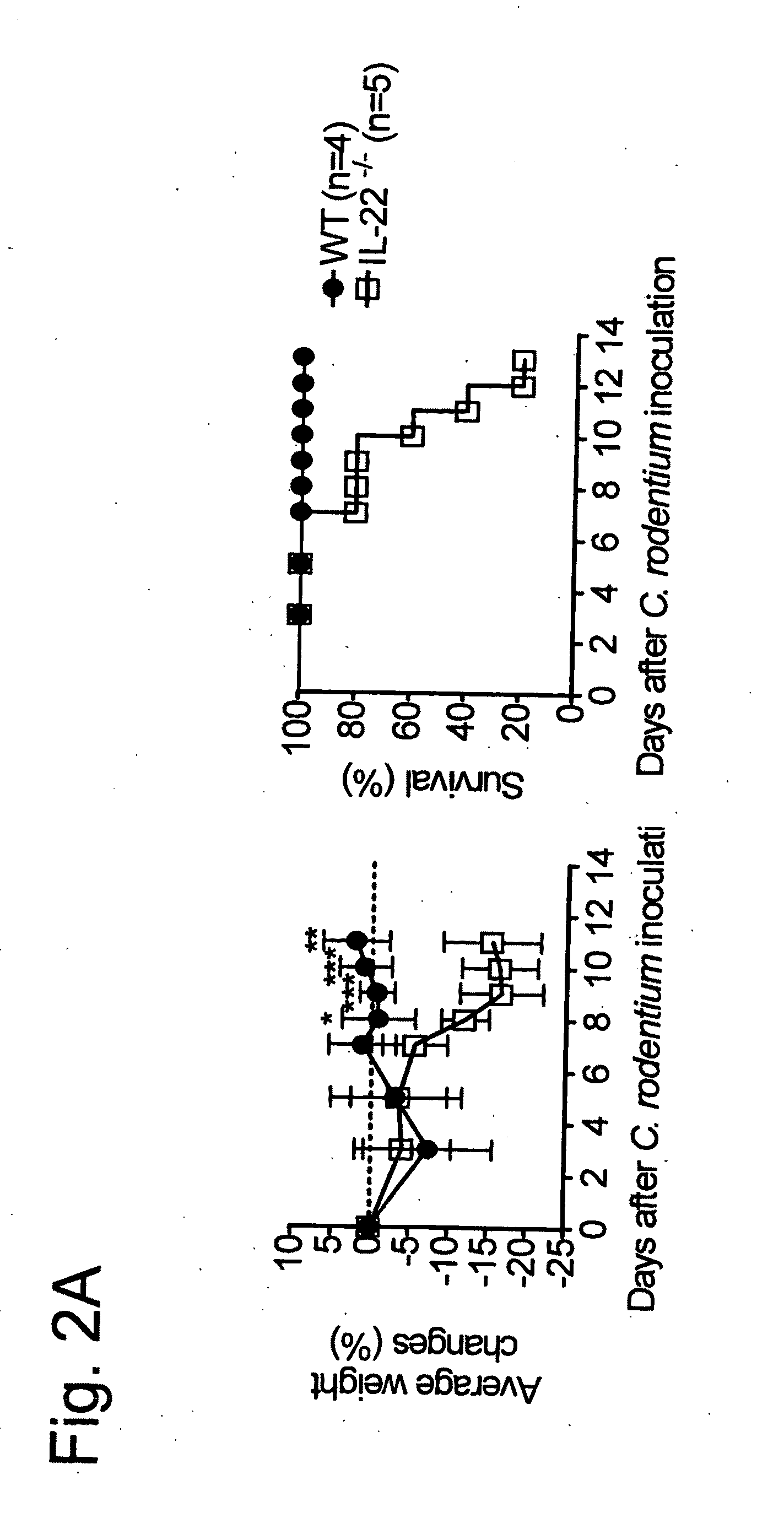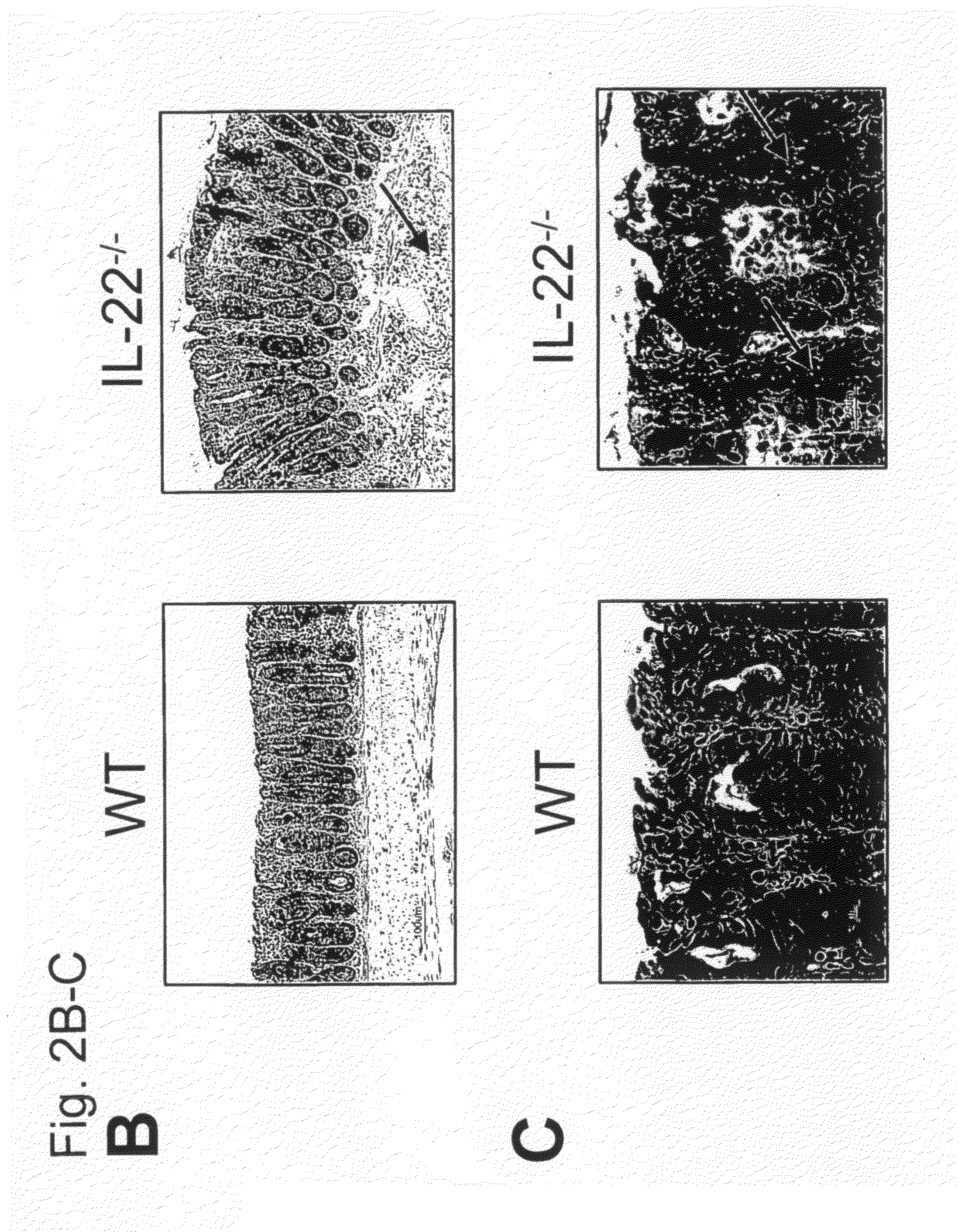Methods for treatment of microbial disorders
a technology for microbial disorders and treatment methods, applied in the field of microbial disorders, can solve problems such as continuing to pose a serious threat to global health, and achieve the effect of enhancing the anti-microbial immune respons
- Summary
- Abstract
- Description
- Claims
- Application Information
AI Technical Summary
Problems solved by technology
Method used
Image
Examples
example 1
IL-23 is Essential for IL-22 Regulation During an Infectious Disease Process
[0381]The data herein demonstrate that IL-23 is essential for IL-22 regulation during an infectious disease process.
[0382]Both IL-22 receptor pairs, IL-22R and IL-10Rβ chains, are expressed in the GI tract of wildtype C57B1 / 6 mice (FIG. 1A). Their expression in the duodenum, jejunum, ileum, and colon are higher than they are in the skin, a tissue where IL-22 has been shown to induce hyperplasia. Consistently both colonic epithelial cells and subepithelial myofibroblasts have been reported to respond to IL-22. During C. rodentium infection, IL-22 was induced in the colon of wildtype mice (FIG. 1B), as were cytokines that promote Th17 cell differentiation, including the p19 and p40 subunit of IL-23 (FIG. 1C-D), and IL-6 (FIG. 1E). All of these cytokines were rapidly induced, with peak expression around day 4 post inoculation. In contrast, IL-17 induction had slower kinetics and reached its maximum level at day...
example 2
IL-22 is a Key Downstream Effector Cytokine that Contributes to the Biology of IL-23 in Controlling Microbial Infection
[0385]The altered regulation of IL-22 in both IL-23 deficient and IL-6− / − mice indicated that IL-22 may play a critical role in the host defense against C. rodentium infection. To further examine the role of IL-22, IL-22− / − mice were inoculated with C. rodentium. While wildtype littermates transiently lost weight but were able to fully recover after day 6, IL-22− / − mice continued losing weight following C. rodentium infection (FIG. 2A). About 80% of IL-22− / − mice became moribund or died 12 days post C. rodentium inoculation (FIG. 2A). Histologic analysis of the colons from day 8 infected IL-22− / − mice demonstrated increased mucosal thickness when compared with that of WT mice (FIG. 2B). Coincidentally, there was also increased submucosal inflammation (Arrow, FIG. 2B). Furthermore, while in control mice, C. rodentium infection was predominantly superficial, large num...
example 3
IL-22 Plays a Critical Role in the Early Stage of Bacterial Infection
[0389]To determine whether early induction of IL-22 is critical for the host to mount a sufficient response against C. rodentium infection in order to prevent lethality, anti-IL-22 neutralizing antibody was administrated every other day starting either at day 0 or at day 8 post inoculation of C. rodentium. As expected, mice that received anti-IL-22 mAb at the same time as the bacterial inoculation continued to lose weight, and all became moribund or died 12 days post inoculation. In contrast, all isotype control antibody treated animals survived (FIG. 2E). Mice that received anti-IL-22 mAb starting 8 days post inoculation had a similar outcome as did isotype mAb treated mice, with full recovery from infection.
[0390]Therefore, these data indicate that IL-22 plays a critical role in the early stage of C. rodentium infection, but plays no role during the later phase of host defense when bacteria are being eradicated.
PUM
| Property | Measurement | Unit |
|---|---|---|
| TNF-α | aaaaa | aaaaa |
| host resistance | aaaaa | aaaaa |
| time course real- | aaaaa | aaaaa |
Abstract
Description
Claims
Application Information
 Login to View More
Login to View More - R&D
- Intellectual Property
- Life Sciences
- Materials
- Tech Scout
- Unparalleled Data Quality
- Higher Quality Content
- 60% Fewer Hallucinations
Browse by: Latest US Patents, China's latest patents, Technical Efficacy Thesaurus, Application Domain, Technology Topic, Popular Technical Reports.
© 2025 PatSnap. All rights reserved.Legal|Privacy policy|Modern Slavery Act Transparency Statement|Sitemap|About US| Contact US: help@patsnap.com



